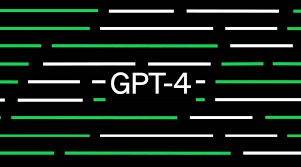OpenAI has recently announced that they are working on the next generation of their AI language model, GPT-4. This news has caused a lot of excitement and anticipation among experts and enthusiasts alike, as GPT-3, the current version of the model, has already made a significant impact in various fields such as natural language processing, machine translation, and even creative writing.
GPT-4 is expected to be a major breakthrough in AI language models. OpenAI has not revealed many details about the model yet, but they have confirmed that it will have a significantly larger size and capacity than GPT-3. GPT-3 has already made headlines for being the largest language model to date, with 175 billion parameters. However, GPT-4 is expected to be even bigger, possibly surpassing 1 trillion parameters.
The significance of this increase in capacity cannot be overstated. The larger the model, the more data it can process and the more accurate its predictions and responses can be. This means that GPT-4 will be able to perform more complex tasks than GPT-3, such as understanding and generating more nuanced and sophisticated language, as well as improving its ability to reason and solve problems.
In addition to its increased size, GPT-4 is also expected to have a more advanced architecture than its predecessor. OpenAI has been working on developing more efficient and effective algorithms that can process and analyze data more quickly and accurately. These improvements will allow GPT-4 to perform tasks with even greater speed and accuracy than GPT-3.
The potential applications for GPT-4 are numerous and wide-ranging. In the field of natural language processing, GPT-4 could be used to develop more advanced chatbots and virtual assistants that can understand and respond to human language more accurately and naturally. It could also be used to improve language translation services, making it easier for people to communicate across different languages and cultures.
GPT-4 could also have a significant impact on the field of creative writing. GPT-3 has already been used to generate poetry, fiction, and even music, with varying degrees of success. With its increased size and capacity, GPT-4 could be used to create more sophisticated and nuanced works of art, potentially revolutionizing the creative industries.
However, with all of its potential benefits come some potential risks and challenges. One major concern is that with its increased size and capacity, GPT-4 could become even more susceptible to bias and discrimination. AI language models are only as good as the data they are trained on, and if that data contains biases or prejudices, those biases can be reflected in the model’s responses and predictions.
OpenAI has acknowledged these concerns and has stated that they are working to mitigate them. They have already implemented measures such as using more diverse training data and developing algorithms that can detect and correct biases in the model’s responses. However, it will be important for researchers and developers to continue to monitor and address these issues as AI language models become even more advanced and widespread.
Another challenge that GPT-4 and other AI language models will face is the potential for misuse and abuse. With their ability to generate sophisticated language and mimic human responses, these models could be used to spread disinformation, impersonate individuals, or even manipulate public opinion. It will be important for regulators and policymakers to develop guidelines and regulations to ensure that these models are used ethically and responsibly.
In conclusion, the announcement of GPT-4 is a significant development in the field of AI language models. Its increased size and capacity have the potential to revolutionize various industries, from natural language processing to creative writing. However, as with any technological advancement, there are also potential risks and challenges that must be addressed. It will be important for researchers, developers, and policymakers to work together to ensure that GPT-4 and other AI language models are developed and used in a way that benefits society as a whole. As the development of GPT-4 and other advanced AI technologies continues, it will be crucial to prioritize transparency, accountability, and ethical considerations to ensure that these technologies are used to advance human knowledge and progress rather than causing harm.
